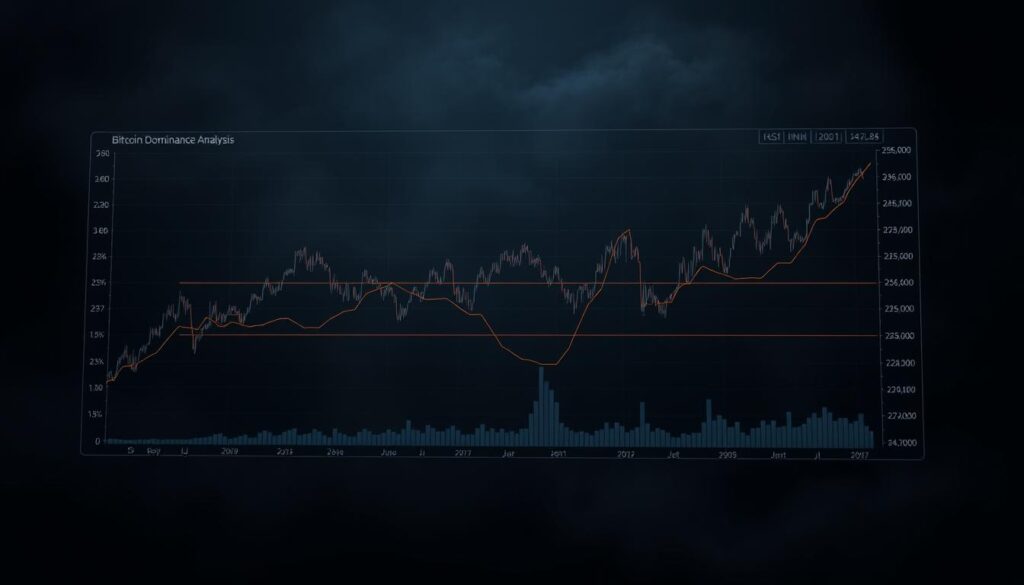Now Reading: Easily Calculate Your Crypto Taxes with This Tool
- 01
Easily Calculate Your Crypto Taxes with This Tool
Easily Calculate Your Crypto Taxes with This Tool
Managing digital asset investments has grown more challenging as regulations evolve. Tracking transactions across platforms like Coinbase or MetaMask often feels overwhelming, especially when tax season arrives. Specialized tools now simplify this process, turning months of manual work into a task that takes minutes.

Over half a million investors rely on automated solutions to handle complex calculations. These services connect directly to exchanges and wallets, importing data seamlessly. Instead of spreadsheets, users get precise capital gains reports aligned with IRS rules.
Why struggle with cost basis math or holding periods? Modern platforms eliminate guesswork for short-term and long-term gains. They even flag potential errors, giving peace of mind before filing. With real-time updates, you’ll always stay compliant as laws change.
Key Takeaways
- Automated systems handle multi-platform transaction tracking effortlessly
- Direct integration with major exchanges ensures error-free data imports
- IRS-compliant reports clarify capital gains and losses instantly
- Cost basis calculations adapt to various transaction types and timelines
- Real-time updates keep portfolios aligned with current tax regulations
Understanding the Basics of Cryptocurrency Taxation
Navigating the tax implications of digital assets starts with grasping core regulatory principles. The IRS classifies blockchain-based holdings as property, meaning every exchange, sale, or purchase triggers potential reporting requirements. This classification aligns digital currencies with traditional assets like stocks when calculating gains or losses.

How Digital Assets Are Classified
Three key factors determine tax obligations for blockchain transactions:
- Disposal method: Selling for fiat, trading tokens, or spending holdings all count as taxable events
- Holding duration: Assets kept under one year face different rates than long-term holdings
- Acquisition type: Earned assets through staking or airdrops are taxed as income at market value
Timing Your Transactions Strategically
Hold periods dramatically impact what you owe. Assets sold within 365 days incur short-term rates matching ordinary income brackets (10%-37%). Those held longer qualify for long-term rates (0%-20%), rewarding patient investors. Proper documentation of purchase dates and prices proves essential for accurate calculations.
Cost basis – your original investment amount – forms the foundation for determining gains. Advanced tools automatically track this data across wallets and exchanges, eliminating manual spreadsheets. With clear records, investors can optimize selling strategies while maintaining compliance.
Using the Crypto Tax Calculator for Accurate Calculations
Accurate financial reporting starts with seamless data integration. Modern platforms eliminate manual tracking by syncing directly with popular trading platforms and storage solutions like Coinbase and MetaMask. This instant connection pulls every swap, transfer, or sale into one centralized dashboard.
Connecting Wallets, Exchanges, and Importing Transactions
Leading tools support hundreds of integrations through secure API links. After authorization, the system scans your entire transaction history across connected accounts. Real-time synchronization captures new activity automatically, whether you’re staking assets or moving holdings between wallets.
Advanced validation checks compare data across blockchains to flag mismatches. Ethereum network transfers appear alongside Binance trades, creating a unified activity log. The software applies correct cost basis methods, factoring in fees and market fluctuations during each transaction.
Multi-platform traders benefit most from these automated imports. Instead of reconciling spreadsheets from five different exchanges, the service compiles everything into IRS-ready reports. Historical rate databases ensure accurate fiat conversions for global transactions.
Errors from manual entry disappear when systems handle data transfers. Your final gain/loss statement reflects precise figures, down to the last satoshi. With cross-verification processes, discrepancies get resolved before they impact your filings.
Navigating Crypto Transactions and Tax Reporting
Streamlining financial documentation for digital assets requires precision and organization. Specialized platforms transform chaotic trade histories into structured records ready for official review. These systems handle everything from complex swaps to simple transfers, ensuring nothing slips through the cracks.

Automatic Data Import and Report Generation
Modern solutions sync with trading platforms to gather every transaction detail automatically. Dates, amounts, and acquisition costs populate directly into IRS-ready documents. This eliminates hours spent cross-referencing spreadsheets or hunting for missing data.
Real-time updates adjust calculations as new activity occurs. Historical records remain accessible for multiple years, simplifying cost basis adjustments. Built-in validation checks compare blockchain data with exchange records to flag inconsistencies before filing.
Filing Forms and Recording Capital Gains
Form 8949 organizes disposal events into short-term and long-term categories. Automated tools fill both sections using imported transaction data, including:
- Asset purchase dates and prices
- Sale timestamps and proceeds
- Fee deductions and net gain/loss figures
Completed forms flow seamlessly into Schedule D through software integrations. This handoff prevents manual entry errors while maintaining audit-ready documentation. Investors gain clarity on potential liabilities months before deadlines, allowing strategic decisions about asset retention or disposal.
Strategies to Lower Your Cryptocurrency Taxes
Smart investors use proven methods to minimize obligations while staying compliant. By combining timing tactics, asset management approaches, and regulatory opportunities, you can significantly reduce what you owe. Let’s explore practical steps to keep more of your profits.

Leveraging Tax Loss Harvesting
Offset gains by selling underperforming assets before year-end. This strategy lets you deduct up to $3,000 in losses against ordinary income. Excess amounts roll forward to future years. Timing matters – execute sales at least 30 days before repurchasing to avoid wash-sale rules.
Example: If you made $15,000 on Ethereum but lost $8,000 on Bitcoin, you’d only pay taxes on $7,000 in net gains. Automated tools track these opportunities across portfolios, flagging optimal moments to act.
Long-Term Asset Holding and Other Mitigation Methods
Hold investments 366+ days to qualify for reduced rates (0-20% vs. 10-37%). Combine this with:
- IRA investments: Grow holdings tax-free in retirement accounts
- Charitable donations: Avoid capital gains by gifting appreciated assets
- Income timing: Sell during low-earning years to stay in lower brackets
Specific identification methods let you choose which asset lots to sell first. This tax implications of crypto trading approach maximizes cost basis adjustments. Always consult professionals when implementing advanced strategies.
Insights for U.S. Crypto Investors
American investors face layered tax responsibilities that shift with earnings and geography. Your yearly earnings and where you live create distinct financial landscapes for digital asset management. Strategic planning becomes essential when balancing federal requirements with regional rules.
Understanding Federal and State Tax Implications
Long-term holdings (366+ days) offer better rates than quick trades. For 2024, single filers pay 0% on gains below $47,025. Middle earners ($47,026-$518,900) face 15%, while top brackets hit 20%.
State policies add complexity. Texas and Florida skip state income taxes entirely. Others like California add up to 13.3% extra. Your filing status – single, married, or head of household – changes bracket thresholds.
Short-term trades (
Income swings across years create planning opportunities. Selling during low-earning periods might save thousands. Professional guidance helps navigate these variables while maintaining full compliance.
Wrapping Up Your Crypto Tax Planning Journey
Digital asset management becomes stress-free when using modern solutions that handle complex calculations. Over half a million investors now automate their financial tracking through services like CoinLedger, which imports data directly from exchanges and wallets. This eliminates manual errors while ensuring compliance with evolving regulations.
Strategic planning helps maximize returns. Holding assets longer than a year often reduces rates, while tools automatically categorize short-term vs long-term gains. Pair these features with portfolio optimization strategies to enhance overall profitability.
Key advantages include:
- Automatic synchronization across multiple platforms
- IRS-ready forms populated with accurate cost basis data
- Real-time updates for changing tax laws
Free account options let users test services before committing. Start by connecting your preferred exchange – detailed reports generate within minutes, not weeks. With precise capital gains calculations and audit-proof records, you’ll approach deadlines with confidence rather than anxiety.
FAQ
How does the IRS classify digital assets?
The IRS treats cryptocurrencies like Bitcoin as property. This means selling, trading, or spending them triggers capital gains or losses, which must be reported on your income tax return.
What’s the difference between short-term and long-term gains?
Profits from assets held under one year are short-term and taxed at ordinary income rates. Holdings retained over a year qualify for long-term rates, which are generally lower (0%, 15%, or 20% based on annual income).
Can this tool sync data from platforms like Coinbase?
Yes. Most calculators integrate directly with major exchanges (e.g., Binance, Kraken) and wallets, automatically importing transaction history to streamline cost basis tracking and profit calculations.
Which forms are needed for reporting gains?
Form 8949 details individual transactions, while Schedule D summarizes total gains or losses. These forms attach to your Form 1040 during filing.
How can I reduce my tax liability legally?
Strategies include tax loss harvesting (offsetting gains with losses) and holding assets longer to qualify for lower long-term rates. Charitable donations of appreciated holdings also offer deductions.
Do state laws affect crypto taxes?
Yes. While federal rules apply nationwide, states like California or New York may impose additional income taxes or reporting requirements. Always check local regulations.
What if I forgot to report past transactions?
Use amended returns (Form 1040-X) to correct prior filings. Tools with multi-year support help reconstruct historical data to ensure compliance and avoid penalties.













